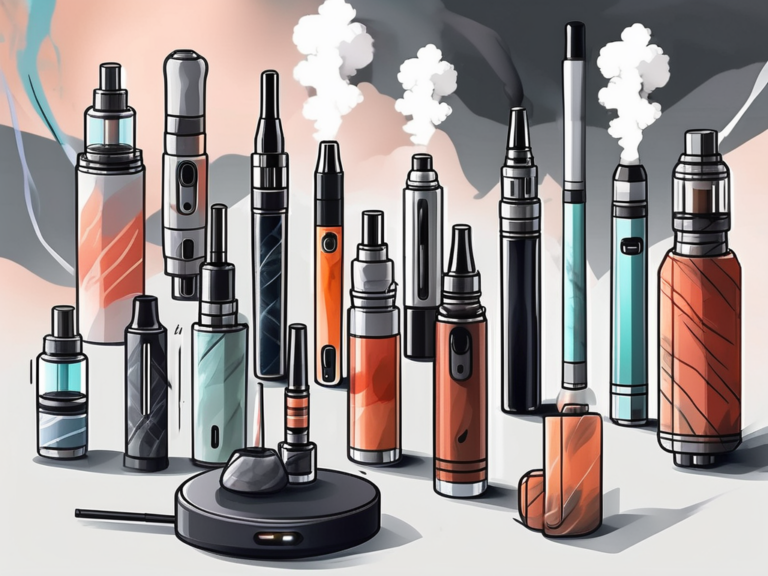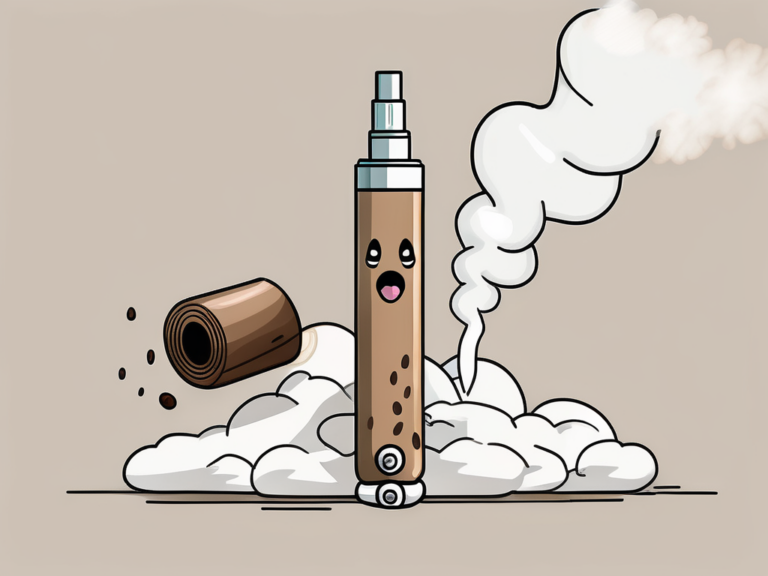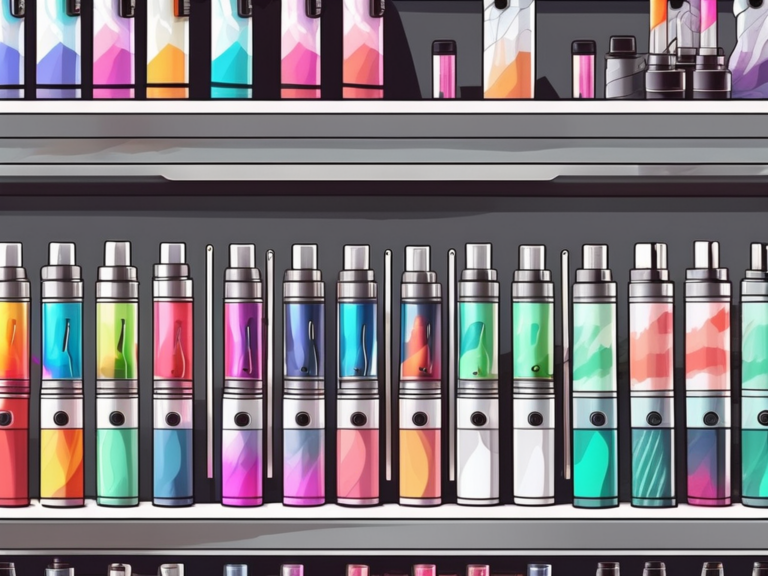why do vapes burn
Vaping has become a popular alternative to traditional smoking, offering a host of benefits such as portability, convenience, and a wide range of flavors. However, one issue that vapers occasionally encounter is vape burns. In this article, we will explore the various aspects of why vapes burn, including the basics of vaping, the science behind vape burns, common reasons for vape burns, the health risks associated with them, and practical tips for preventing these incidents.
Understanding the Basics of Vaping
Before delving into why vapes burn, it is essential to grasp the fundamentals of vaping. Vaping, also known as electronic cigarette or e-cigarette use, involves inhaling vapor produced by a device known as a vape. The vape consists of several components that work together to create the vapor. These components include a battery, a heating element, known as a coil, and a tank or cartridge to hold the e-liquid.
The Components of a Vape
The heart of any vape is its battery, which provides the necessary power for the device to function. The coil, typically made of nichrome or kanthal wire, is responsible for heating the e-liquid to produce vapor. The tank or cartridge holds the e-liquid and connects to the coil to deliver the vapor to the user.
Additionally, some advanced vapes may have features like adjustable airflow, which allows users to control the amount of air that mixes with the vapor. This customization can affect the temperature and density of the vapor, providing a tailored vaping experience for enthusiasts.
The Role of E-Liquid in Vaping
E-liquid, also referred to as vape juice, is a crucial element in the vaping experience. It typically contains a mixture of propylene glycol (PG), vegetable glycerin (VG), flavorings, and nicotine (although some e-liquids are nicotine-free). When the coil heats up, it vaporizes the e-liquid, which is then inhaled by the user.
Moreover, the flavor options for e-liquids are vast and diverse, ranging from traditional tobacco and menthol to fruity, dessert, and beverage-inspired flavors. This variety allows vapers to explore different tastes and find their preferred vaping flavor profile, enhancing their overall enjoyment of the vaping experience.
The Science Behind Vape Burns
Now that we have a basic understanding of vaping, let’s explore the science behind vape burns.
Vaping devices are intricate pieces of technology that rely on the precise application of heat to function effectively. The heating element, often a coil made of materials like kanthal or stainless steel, is responsible for turning the e-liquid into vapor. However, the process is delicate, and if the heat is not controlled properly, it can have negative consequences.
The Impact of Heat on Vape Devices
Heat plays a significant role in the functionality of vape devices. While the coil requires heat to vaporize the e-liquid, excessive heat can lead to vape burns. When the coil gets too hot, it can cause the e-liquid to burn rather than vaporize, resulting in an unpleasant taste and potentially harmful byproducts.
Moreover, the type of coil used in a vape device can also affect the heat distribution and overall vaping experience. Different materials have varying heat capacities and resistance levels, influencing how quickly the coil heats up and cools down. This intricate dance of heat management is crucial in preventing vape burns and ensuring a smooth vaping experience.
The Chemical Reaction in Vaping
During vaping, the e-liquid undergoes a chemical reaction when exposed to heat. This reaction results in the transformation of the liquid into vapor, which can be inhaled. However, if the temperature rises beyond the optimal range, the chemical reaction may become unstable, leading to the production of potentially harmful substances.
It’s essential for vapers to understand the science behind these chemical reactions to make informed decisions about their vaping habits. By being aware of how heat impacts their devices and e-liquids, users can take steps to prevent vape burns and ensure a safer and more enjoyable vaping experience.
Common Reasons for Vape Burns
Understanding the common causes of vape burns can help users avoid them and enjoy a safer vaping experience.
When it comes to vape burns, knowledge is power. By delving deeper into the potential reasons behind these unfortunate incidents, vapers can arm themselves with the information needed to prevent such mishaps.
Incorrect Usage of Vape Devices
One of the primary reasons for vape burns is the improper use of vape devices. Insufficient knowledge about device operation, including incorrect wattage settings or using incompatible coils, can lead to overheating and subsequent burns.
It’s crucial for vapers to familiarize themselves with the specific requirements and capabilities of their chosen devices. This includes understanding the optimal wattage range, coil compatibility, and proper maintenance procedures to ensure safe and enjoyable vaping sessions.
Poor Quality Vape Products
Using low-quality vape products, such as cheap batteries or coils, can increase the likelihood of vape burns. Inferior materials may not handle heat well or might have manufacturing defects that pose a risk during usage.
Investing in high-quality vape products from reputable manufacturers is a proactive step towards reducing the risk of vape burns. Quality components not only offer better performance and longevity but also prioritize user safety by undergoing rigorous testing and quality control measures.
The Health Risks of Vape Burns
While occasional vape burns may not cause severe harm, understanding the potential health risks associated with them is important. Vape burns can occur when the coil in an electronic cigarette gets too hot, causing the e-liquid to burn instead of vaporize. This can result in a harsh and unpleasant taste, as well as potential health consequences.
Short-term Effects on Health
Immediate consequences of vape burns can include throat or mouth irritation, coughing, and a harsh lingering taste. These symptoms are usually temporary and subside over time. It is important to note that while short-term effects may not be severe, they can still be uncomfortable and may indicate that adjustments need to be made to prevent further burns.
Long-term Consequences of Vape Burns
Repeated exposure to excessive heat or burnt e-liquid may have long-term effects on health. Although research is still ongoing, there is concern that continuous inhalation of harmful byproducts resulting from vape burns could potentially lead to respiratory issues. Chronic irritation of the throat and airways, as well as damage to lung tissue, are among the potential long-term consequences that researchers are investigating.
Preventing Vape Burns
Fortunately, there are practical measures that vapers can take to prevent vape burns from occurring.
Proper Maintenance of Vape Devices
Regular maintenance of vape devices is crucial in preventing burns. This includes ensuring clean connections, replacing worn-out coils, and following the manufacturer’s recommendations for usage and maintenance.
Safe Vaping Practices
Adopting safe vaping practices can significantly reduce the risk of vape burns. These practices include avoiding dry hits by keeping the e-liquid levels adequate, using appropriate wattage settings, and taking breaks between puffs to prevent the device from overheating.
Furthermore, it is essential to store vape devices properly when not in use. Keeping them away from direct sunlight and extreme temperatures can help maintain their integrity and reduce the likelihood of malfunctions that could lead to burns.
Choosing the Right E-Liquid
Another factor to consider in preventing vape burns is selecting the right e-liquid for your device. Different e-liquids have varying viscosity levels, which can impact how well they are absorbed by the coils. Using an e-liquid that is compatible with your device can help prevent dry hits and burnt tastes.






